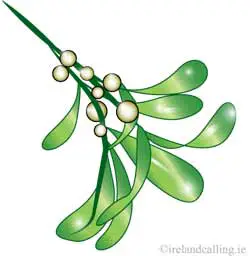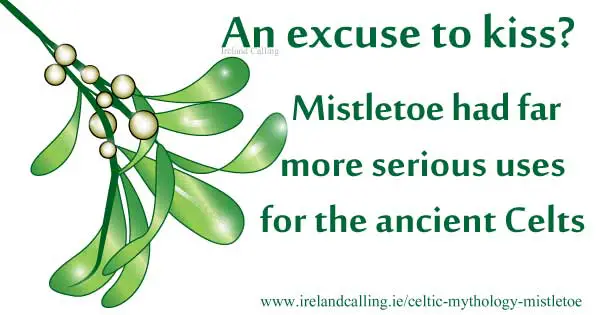Mistletoe was a most sacred plant to the druids and was thought to ward off evil, restore health and bestow fertility.
It now plays a significant role in Christmas celebrations.
Mistletoe does not grow on the ground, but instead on the branches of trees with no connection to the earth.
The Celtic Druids believed that mistletoe was the essence of the sun god Taranus and any tree hosting mistletoe on its branches was marked sacred.

The Druids worshipped the sun and held trees in high regard. They believed that the mistletoe would take on the essence of the tree it inhabited, scientifically accurate as the plant was feeding off the tree.
Should they find mistletoe growing on the holiest of trees, the oak, this was prized above all else. Lengthy ceremonies were held for harvesting the shrub whose powers included warding off evil and protection from poison.
Mistletoe was harvested on the sixth day after the new moon following autumn, when the leaves had fallen from the trees making it easier to find and access.
This could explain its significance as part of Christmas celebrations and customs that exist today in western culture.
During harvesting, the mistletoe was treated with the greatest care and could never touch the ground.
Livestock were sacrificed in return for this magical gift from the sun god.
During medieval times mistletoe was known as allheal due to the belief that it had many medicinal qualities. Mistletoe’s leaves and berries were used to treat a variety of ailments including cancer.
It was also hung up in homes and stables to protect the household from the mischief of fairies and other harmful evils.

The superstitions surrounding mistletoe developed over time and it later became associated with love, friendship, goodwill and happiness.
It was thought that love would always reside in a house that hung mistletoe and people made sure that a fresh sprig was put up each year to be sure this was the case.
These old traditions have now evolved into the practice of kissing under the mistletoe at Christmas.
